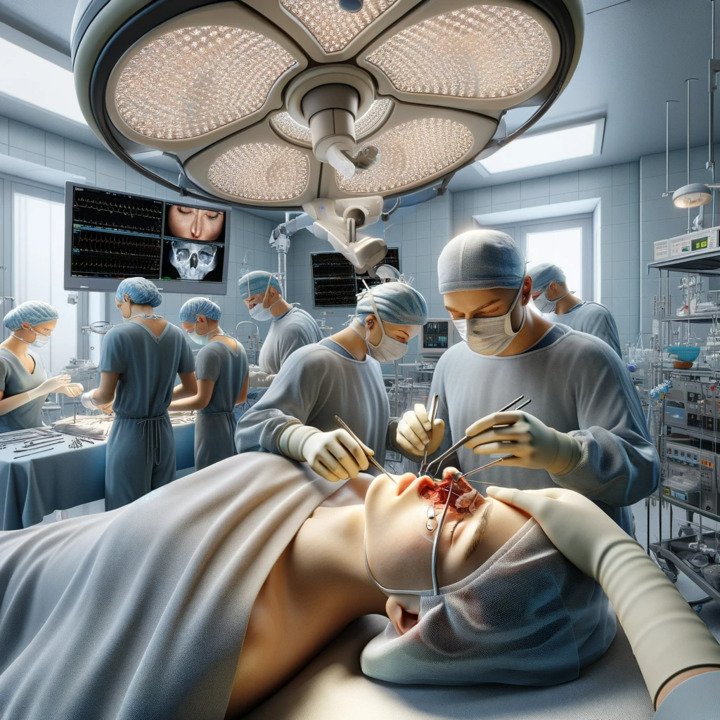
Septoplasty, a surgical procedure to correct a deviated nasal septum (the cartilage and bone dividing the nasal cavity), is typically performed to improve breathing through the nose, alleviate nasal congestion, and correct any related issues. The success rate of septoplasty can vary based on several factors, including the extent of the deviation, the surgical technique used, and individual patient factors such as healing response and presence of other nasal or sinus issues.
- Success Rate:
- The success rate for septoplasty in terms of improving nasal breathing and reducing symptoms of nasal obstruction is generally high, often reported to be between 70% to 90%.
- Success is typically measured by the improvement in airflow through the nose, relief from symptoms like nasal obstruction or congestion, and overall patient satisfaction.
- Factors Affecting Success Rate:
- Severity of Septal Deviation: Patients with more severe deviations may experience more significant improvement post-surgery.
- Presence of Additional Nasal Issues: Coexisting conditions such as chronic sinusitis or allergic rhinitis can affect outcomes and overall symptom relief.
- Surgical Technique and Surgeon Experience: The surgeon’s expertise and the specific surgical approach can influence the success of the procedure.
- Risks and Complications:
- Potential risks include bleeding, infection, a hole in the septum (septal perforation), and change in the shape of the nose.
- In some cases, patients might not experience significant improvement in breathing or may require additional surgery.
- Recovery and Rehabilitation:
- Recovery time varies but typically includes a few days of significant congestion and a few weeks of overall healing. Most patients return to normal activities within a week.
- Postoperative care, such as avoiding strenuous activities and following nasal care instructions, is important for successful healing.
- Long-Term Outcomes:
- In the long term, most patients experience lasting improvement in nasal breathing and a reduction in related symptoms.
- Some patients may continue to have symptoms due to other nasal or sinus conditions.
- Patient Satisfaction:
- Patient satisfaction following septoplasty is generally high, especially among those who experience significant improvement in breathing and a reduction in nasal obstruction.

Patients considering septoplasty should have a detailed discussion with an ENT (ear, nose, and throat) specialist or a facial plastic surgeon. This discussion should include an understanding of the potential risks, benefits, and expected outcomes based on their specific condition and overall health. It’s important for patients to have realistic expectations about the surgery and to understand that while septoplasty can significantly improve nasal breathing, it may not resolve all symptoms, especially if there are other contributing factors to nasal obstruction.
Frequently Asked Questions
Is septoplasty a high risk surgery?
Septoplasty is generally considered a low-risk surgery. Like any surgical procedure, there are risks, but they are relatively minimal when performed by an experienced ENT surgeon.
What is the failure rate of septoplasty?
The failure rate, meaning the rate at which patients continue to experience symptoms or need revision surgery, varies but is relatively low. Some studies suggest a revision rate of around 5-15%.
Can septoplasty go wrong?
Although rare, complications can occur, such as bleeding, infection, a hole in the septum (septal perforation), or continued symptoms.
Are septoplasty results permanent?
Results are generally permanent. However, factors like healing process, development of scar tissue, or subsequent injury can affect long-term outcomes.
How is life after septoplasty?
Most patients experience improved airflow through the nose, better breathing, reduced nasal congestion, and an overall improvement in quality of life.
Is fixing deviated septum worth it?
For many patients, particularly those with significant breathing difficulties, septoplasty can greatly improve symptoms and is considered worth it.
Why is my nose still blocked after septoplasty?
This can happen if the surgery didn’t fully correct the deviation, if there is post-surgical swelling, or if there are other issues like turbinate hypertrophy or allergies.
How fragile is your nose after septoplasty?
The nose can be somewhat fragile post-surgery, especially in the first few weeks. It’s important to avoid activities that might result in nasal trauma during the recovery period.
What’s the worst day after septoplasty?
Patients often report the first few days post-surgery as the most uncomfortable, with potential symptoms like nasal congestion, mild pain, and general discomfort.
What causes septoplasty to fail?
Failure can occur due to incomplete correction of the deviation, development of scar tissue, or the presence of other untreated nasal or sinus issues.
Does face look different after septoplasty?
Septoplasty usually doesn’t change the external appearance of the nose significantly. It’s primarily aimed at improving the internal structure for better airflow.

